Mass Marathons have become very popular in recent years, and there is hardly any major city in the world now that does not have one. Thirty years ago the idea was new and somehow odd, but it began to win more and more support throughout the sporting communities around the globe.
In 1980 the idea reached Dublin and the first city marathon was organised by a group of running enthusiasts led by (the late) Noel Carroll.
He persuaded the Business Houses Athletic Association (BHAA) to support the event, and in the first year 2100 runners - most of them Irish - took part. 1420 of them finished. Dick Hooper of the Raheny Shamrocks Athletic Club claimed first place, in a time of 2 hours, 16 minutes and 14 seconds. The first female winner was Carey May, who finished the marathon in 2 hours, 42 minutes and 11 seconds.
Much has changed in the nearly three decades since. We had and lost the economic boom of the 'Celtic Tiger' and many foreigners now live in Ireland and participate in our sporting events. Many foreign athletes even travel to cities to participate in the now popular marathon races, and thus it is no surprise that the number of runners has increased nearly six-fold. But one element of the event has not changed: it still takes place on the last Monday in October, which is always a bank holiday in Ireland (compensating for Samhain, which is unfortunately still not a public holiday).
In 1980 the idea reached Dublin and the first city marathon was organised by a group of running enthusiasts led by (the late) Noel Carroll.
He persuaded the Business Houses Athletic Association (BHAA) to support the event, and in the first year 2100 runners - most of them Irish - took part. 1420 of them finished. Dick Hooper of the Raheny Shamrocks Athletic Club claimed first place, in a time of 2 hours, 16 minutes and 14 seconds. The first female winner was Carey May, who finished the marathon in 2 hours, 42 minutes and 11 seconds.
Much has changed in the nearly three decades since. We had and lost the economic boom of the 'Celtic Tiger' and many foreigners now live in Ireland and participate in our sporting events. Many foreign athletes even travel to cities to participate in the now popular marathon races, and thus it is no surprise that the number of runners has increased nearly six-fold. But one element of the event has not changed: it still takes place on the last Monday in October, which is always a bank holiday in Ireland (compensating for Samhain, which is unfortunately still not a public holiday).
This morning over 11,700 runners assembled at Fitzwilliam Square, the traditional starting point of the race, for the 29th Dublin City Marathon, run in aid of the National Children's Hospital in Tallaght. It was a crispy cold, but sunny day, as we have quite a few here in October, so mood and conditions were quite good.
There was a major increase in Irish runners this year. Over recent years more than half of the participants had come from overseas, but Irish runners made up 57% of this year's entrants. There were also more women than ever before, making up one-third of the field.
But there is only one Mary Hickey Nolan, the only woman who ran in all the Dublin City Marathons to date, with this being her 29th race.
The event started at 8.50 a.m. with the wheelchair entrants, followed by the elite and then the general field at 9 a.m.
As usual the route went from Fitzwilliam Square through the inner city and the Phoenix Park, to end at Merrion Square.
The first male runner to finish this year was the Ukrainian Andriy Naumov, who ran the 26.2 mile distance in 2 hours, 11 minutes and 6 seconds. As the overall winner he received the Noel Carroll Memorial Trophy and a € 15,000 cash prize.
Thus for the 16th year in a row the winner of the Dublin City Marathon was not Irish, a price we have to pay for opening the event to foreign competitors. The best runner from Ireland was Michael O'Connor, while the Russian Larrisa Zousko was the fastest woman with a time of 2 hours, 29 minutes and 55 seconds.
The special wheelchair race was won by Paul Hannan from Armagh in 2 hours, 22 minutes and 33 seconds.
Even though I run for at least an hour every morning - and on some days longer - I have not yet attempted a marathon myself. I have the greatest respect for anyone who has done it and wish them all the best, together with my sincere congratulations to the winners.
The Emerald Islander
There was a major increase in Irish runners this year. Over recent years more than half of the participants had come from overseas, but Irish runners made up 57% of this year's entrants. There were also more women than ever before, making up one-third of the field.
But there is only one Mary Hickey Nolan, the only woman who ran in all the Dublin City Marathons to date, with this being her 29th race.
The event started at 8.50 a.m. with the wheelchair entrants, followed by the elite and then the general field at 9 a.m.
As usual the route went from Fitzwilliam Square through the inner city and the Phoenix Park, to end at Merrion Square.
The first male runner to finish this year was the Ukrainian Andriy Naumov, who ran the 26.2 mile distance in 2 hours, 11 minutes and 6 seconds. As the overall winner he received the Noel Carroll Memorial Trophy and a € 15,000 cash prize.
Thus for the 16th year in a row the winner of the Dublin City Marathon was not Irish, a price we have to pay for opening the event to foreign competitors. The best runner from Ireland was Michael O'Connor, while the Russian Larrisa Zousko was the fastest woman with a time of 2 hours, 29 minutes and 55 seconds.
The special wheelchair race was won by Paul Hannan from Armagh in 2 hours, 22 minutes and 33 seconds.
Even though I run for at least an hour every morning - and on some days longer - I have not yet attempted a marathon myself. I have the greatest respect for anyone who has done it and wish them all the best, together with my sincere congratulations to the winners.
The Emerald Islander



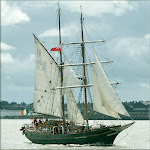

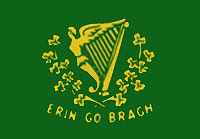




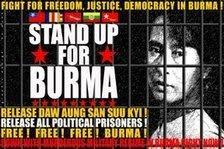
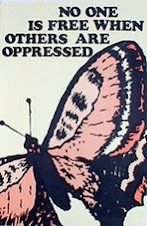






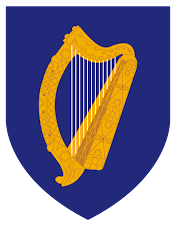

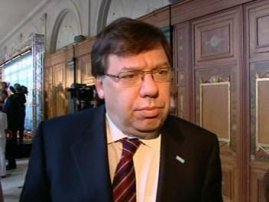




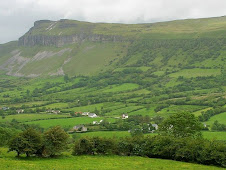
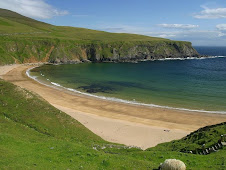













1 comment:
Some might say what are you running from or who are you running to? Running in itself is a good thing with the proper rubdown afterwards for sore muscles. Many younger people should run more as they have the ability. One of the traditions of the family walking on sundays is even more valuable.
Post a Comment